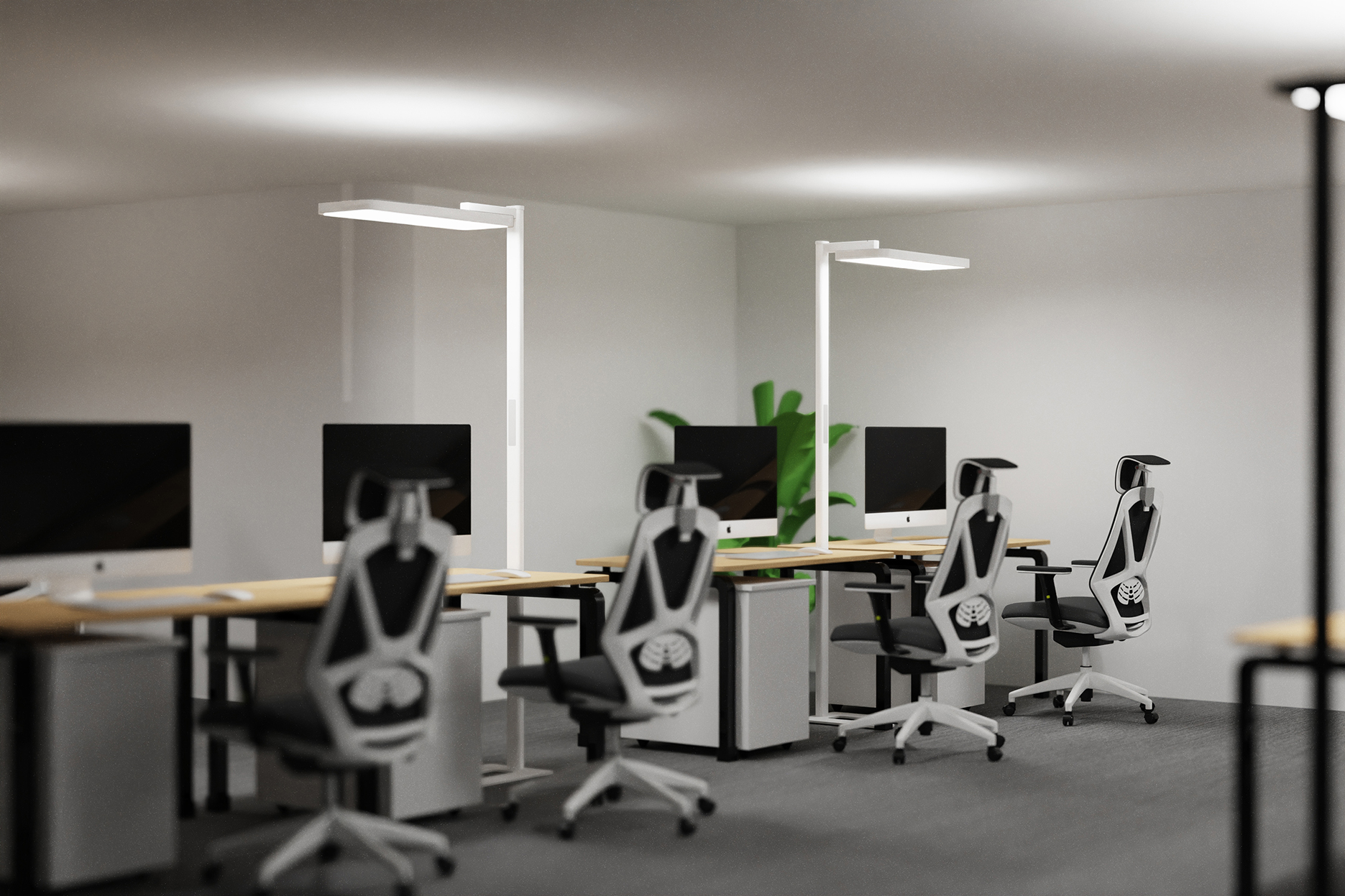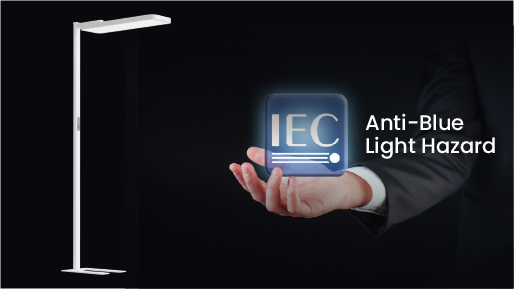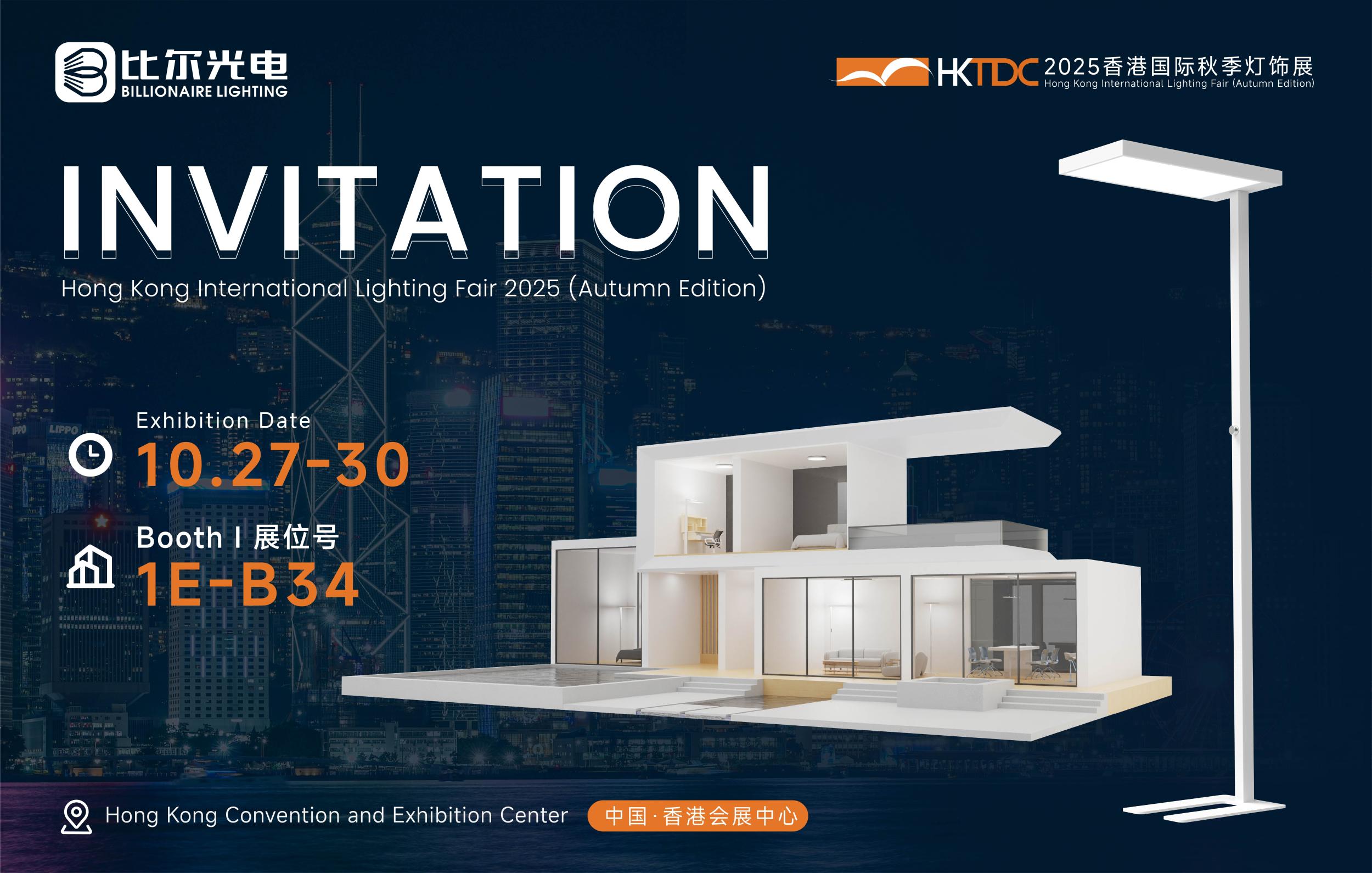Introduction
Table stand lights, also commonly referred to as table lamps, are versatile and essential fixtures in both residential and commercial settings. These compact lighting solutions have the remarkable ability to transform the ambiance of a space, providing both practical illumination and aesthetic appeal. Whether placed on a bedside table, a desk, a console in the hallway, or a side table in the living room, table stand lights play a crucial role in enhancing the functionality and visual charm of any environment. Their designs range from classic and traditional to modern and avant - garde, catering to a wide spectrum of tastes and interior design styles.
Historical Evolution of Table Stand Lights
The history of table stand lights dates back thousands of years, closely intertwined with the development of human civilization and the need for portable lighting. In ancient times, early forms of table - mounted lighting included oil - filled vessels with wicks, such as the Roman oil lamps. These simple yet functional devices were made from materials like clay, metal, or glass and were used to provide light for activities such as reading, writing, and dining in the evenings.
During the Middle Ages, candlesticks became a popular form of table stand lighting. Crafted from materials like wood, brass, or silver, candlesticks were often adorned with intricate designs and were a symbol of status and wealth. The Renaissance period saw an increase in the artistry of table stand lights, with more elaborate designs featuring carved bases and decorative elements. As glass - blowing techniques advanced, glass shades began to be incorporated, adding a new dimension to the aesthetics of table lamps.
The Industrial Revolution in the 18th and 19th centuries brought significant changes to the production of table stand lights. The invention of the gas lamp led to the creation of table - mounted gas fixtures, which provided a brighter and more reliable source of light compared to candles and oil lamps. However, it was the development of the incandescent light bulb by Thomas Edison in the late 19th century that truly revolutionized table lamp design. This technological breakthrough made electric table stand lights accessible to the masses, leading to a proliferation of new designs and styles.
In the 20th century, the modernist movement had a profound impact on table stand light design. Designers began to focus on simplicity, functionality, and the use of new materials such as aluminum, plastic, and fiberglass. Iconic designs from this era, such as the Bauhaus - inspired table lamps, emphasized clean lines, geometric shapes, and a harmonious balance between form and function. The latter part of the 20th century and the early 21st century witnessed an explosion of creativity in table lamp design, with the introduction of LED technology further expanding the possibilities for innovation.
Design Elements of Table Stand Lights
Styles
1. Traditional Styles
Traditional table stand lights draw inspiration from classic design periods such as Victorian, Edwardian, and Colonial. These lamps exude an air of elegance and sophistication, often featuring ornate details, rich materials, and a warm color palette. The bases of traditional table lamps are commonly made from materials like solid wood, brass, or bronze. For example, a Victorian - style table lamp might have a wooden base intricately carved with floral motifs, scrolls, or acanthus leaves, finished with a rich, dark stain. The lampshades are typically crafted from luxurious fabrics such as silk, velvet, or brocade, and may be adorned with tassels, fringes, or decorative trims. Traditional table stand lights are perfect for homes with a classic or traditional decor theme, where they can complement antique - style furniture, heavy draperies, and richly colored upholstery, adding a touch of old - world charm.
2. Contemporary Styles
Contemporary table stand lights embrace modern design principles, characterized by clean lines, minimalism, and the use of innovative materials. These lamps often feature sleek, geometric shapes and a neutral color palette, although bold colors and unique forms are also common. The bases can be made from a variety of materials, including stainless steel, aluminum, acrylic, and even concrete. A contemporary table lamp might have a cylindrical stainless - steel base with a polished chrome finish, paired with a simple, white fabric or acrylic lampshade. Some contemporary designs incorporate adjustable elements, such as flexible necks or swiveling heads, allowing for versatile lighting options. These lamps are well - suited for modern, minimalist, or industrial - styled spaces, as they can create a sense of sophistication and simplicity.
3. Rustic and Farmhouse Styles
Rustic and farmhouse - style table stand lights bring a warm, cozy, and inviting atmosphere to any space. They often feature natural materials and a more rugged, textured look. The bases may be made from reclaimed wood, giving them a weathered and aged appearance. For instance, a rustic table lamp could have a base crafted from an old barn beam, with the natural wood grain and knots clearly visible. The lampshades in rustic and farmhouse designs are typically made from materials like burlap, canvas, or metal mesh, which add to the overall rustic charm. These lamps are ideal for homes with a rustic, farmhouse, or shabby - chic decor theme, where they can complement other wooden furniture, vintage accessories, and earthy - toned color schemes.
4. Art Deco Styles
Art Deco table stand lights are known for their bold, geometric designs, luxurious materials, and a sense of glamour. Inspired by the Art Deco movement of the 1920s and 1930s, these lamps often feature streamlined forms, stepped shapes, and intricate patterns. The bases may be made from materials like chrome - plated metal, glass, or Bakelite, and are often adorned with geometric motifs such as chevrons, sunbursts, or zigzags. The lampshades can be made from colored glass, fabric with bold patterns, or parchment, adding to the overall opulent look. Art Deco table lamps are perfect for adding a touch of retro elegance to a space, whether it's a modern home with a vintage - inspired decor or a commercial establishment looking to evoke a sense of the Roaring Twenties.
Materials
1. Metals
Metals are widely used in the construction of table stand lights due to their durability, strength, and aesthetic versatility. Stainless steel is a popular choice for contemporary designs, offering a sleek, modern look with its shiny surface and resistance to corrosion. Brass and bronze, on the other hand, are often used in traditional and transitional designs, providing a warm, classic feel, especially when they have an aged or patina finish. Aluminum is lightweight yet sturdy, making it suitable for lamps with intricate designs or adjustable components. Metal table stand lights can range from simple, minimalist designs with clean lines to more elaborate ones with detailed metalwork, such as filigree or hammered patterns.
2. Wood
Wood is a timeless material for table stand lights, adding warmth and a natural element to any space. Different types of wood, such as oak, walnut, maple, and teak, can be used, each with its own unique grain pattern and color. A wooden table lamp can have a rustic, farmhouse - style look with a rough - hewn base, or a more refined, contemporary appearance with a smooth, polished finish. Some wooden table lamps incorporate other materials, such as metal accents or glass shades, to create a more eclectic and interesting design. Wood is also a popular choice for traditional table stand lights, where its rich texture and natural beauty can enhance the overall aesthetic.
3. Glass
Glass is a versatile material used in table stand lights, either for the lampshade or as a decorative element in the base. Transparent, frosted, colored, or stained glass can be used to create different lighting effects. A transparent glass lampshade allows the light to shine through clearly, creating a bright and airy feel. Frosted glass diffuses the light, creating a soft, ambient glow. Colored glass lampshades can add a pop of color and personality to the lamp, and stained - glass lampshades, often featuring intricate designs, are works of art in themselves. Glass can also be combined with other materials, such as metal or wood, to create a more complex and visually appealing table stand light.
4. Ceramics and Porcelain
Ceramics and porcelain are used to create table stand lights with unique, artistic designs. These materials can be molded into various shapes and decorated with hand - painted patterns, glazes, or textures. Ceramic table lamps can have a rustic, earthy look, while porcelain lamps often offer a more refined and elegant appearance. The use of ceramics and porcelain allows for a high level of customization, making each lamp a one - of - a - kind piece. These lamps are perfect for adding a touch of artistry and individuality to a space.
Shapes and Sizes
Table stand lights come in a wide variety of shapes and sizes, each designed to suit different functional and aesthetic needs. Small, compact table lamps are ideal for bedside tables, providing just enough light for reading or creating a cozy atmosphere in the bedroom. Medium - sized table lamps are commonly used on desks, consoles, or side tables in the living room, where they can serve as both task lighting and decorative elements. Large, statement - making table lamps can be used as focal points in a room, such as on a large dining table or in a spacious entryway.
The shapes of table stand lights are equally diverse. Traditional table lamps often have classic shapes such as urn - shaped, columnar, or candlestick - inspired bases. Contemporary designs may feature more abstract or geometric shapes, such as cubes, cylinders, triangles, or irregular forms. Some table lamps have unique, sculptural shapes that can act as works of art, adding a touch of creativity and personality to the space.
Functions of Table Stand Lights
Task Lighting
One of the primary functions of table stand lights is to provide task lighting, which is focused illumination for specific activities. On a desk, a table lamp with a bright, adjustable light source can be used for reading, writing, working on a computer, or doing detailed tasks such as crafting or drawing. The lamp can be positioned to direct the light precisely where it is needed, reducing eye strain and increasing productivity.
In the bedroom, a bedside table lamp serves as a convenient source of task lighting for reading before sleep or for finding items in the dark. The ability to adjust the brightness or angle of the lamp allows users to customize the lighting to their comfort level. Similarly, in a home office or study, a well - placed table stand light can ensure that the workspace is well - lit, enabling focused work.
Ambient Lighting
Table stand lights also play an important role in providing ambient lighting, which is the overall illumination that creates a comfortable and inviting atmosphere in a room. When multiple table lamps are placed strategically around a space, they can contribute to a soft, diffused light that fills the room, reducing harsh shadows and creating a cozy ambiance. For example, in a living room, placing table lamps on side tables, consoles, or coffee tables can enhance the overall warmth and comfort of the space, making it more inviting for relaxation and socializing.
In the dining room, table stand lights can be used in combination with other lighting fixtures, such as a chandelier, to create a layered lighting effect. The table lamps can provide a softer, more intimate light for dining, complementing the brighter, central light source.
Accent Lighting
Table stand lights can be used effectively as accent lighting to highlight specific features or objects in a room. For instance, a table lamp with a narrow - beam light source can be placed next to a piece of artwork, a decorative sculpture, or a bookshelf to draw attention to these elements. By directing the light onto the object, the table lamp can enhance its colors, textures, and details, creating a focal point in the room.
In a hallway or entryway, a table stand light can be used to accentuate a mirror, a vase, or a unique architectural detail, adding depth and visual interest to the space. This type of accent lighting helps to create a more dynamic and engaging environment.
Placement and Coordination with Interior Decor
Placement
The placement of table stand lights is crucial for maximizing their functionality and aesthetic impact. When used for task lighting, the lamp should be placed as close as possible to the area where the activity is taking place. For example, on a desk, the table lamp should be positioned to the side or behind the user, ensuring that the light does not cause glare on the computer screen or reading material.
For ambient lighting, table lamps should be distributed evenly throughout the room. In a living room, placing a table lamp on each end table beside the sofa, as well as on a console table against the wall, can create a balanced and harmonious light level. In the bedroom, bedside table lamps should be placed at an appropriate height, usually at eye level when sitting up in bed, for easy access and optimal lighting.
When using table stand lights for accent lighting, they should be placed directly in front of or beside the object to be highlighted, ensuring that the light is focused and effective.
Coordination with Furniture and Color Scheme
To create a cohesive and harmonious interior design, table stand lights should be coordinated with the existing furniture and color scheme of the room. The style of the table lamp should match or complement the overall decor theme. For example, in a modern, minimalist living room, a sleek, contemporary table lamp would fit in perfectly, while a traditional - styled table lamp would be more suitable for a classic, elegant dining room.
In terms of color, the table stand light should either blend in with the dominant colors in the room or provide a contrasting accent. A neutral - colored table lamp, such as white, black, or beige, can often work well with a variety of color schemes, acting as a subtle backdrop. On the other hand, a brightly colored or patterned table lamp can add a pop of color and personality to a more monochromatic room, making it a statement piece. The materials and textures of the table lamp should also be considered in relation to the other elements in the room, ensuring a harmonious visual flow.
Market Trends and Future Prospects
The market for table stand lights is constantly evolving, driven by changing consumer preferences, technological advancements, and emerging design trends. One significant trend is the increasing demand for energy - efficient table lamps. With growing environmental awareness and the desire to reduce energy consumption, consumers are more inclined to choose table lamps that use LED bulbs. LED table lamps consume less energy, have a longer lifespan, and produce less heat compared to traditional incandescent bulbs, making them a more sustainable and cost - effective lighting solution.
Another trend is the integration of smart technology into table stand lights. Smart table lamps can be controlled via smartphone apps, allowing users to adjust the brightness, color temperature, and even turn the lamp on or off remotely. Some smart table lamps are also compatible with voice - controlled assistants like Amazon Alexa or Google Assistant, providing a hands - free and convenient lighting experience. This trend towards smart lighting is likely to continue as more consumers seek to create connected and intelligent living spaces.
In terms of design, there is a growing interest in sustainable and eco - friendly materials. Table lamps made from recycled materials, such as reclaimed wood, recycled metal, or recycled plastic, are becoming increasingly popular. Additionally, there is a trend towards minimalist and modular designs, which offer greater flexibility and customization options.
Looking to the future, the development of new materials and lighting technologies will continue to shape the world of table stand lights. For example, the use of flexible and transparent LED materials could lead to the creation of lamps with more innovative and unconventional designs. The integration of augmented reality (AR) and virtual reality (VR) technologies might also offer new ways for consumers to visualize and customize the placement and design of table stand lights in their homes before making a purchase.
In conclusion, table stand lights are an essential and versatile component of interior design. Their ability to combine functionality with aesthetic appeal makes them indispensable in creating well - lit, comfortable, and stylish spaces. Whether for task lighting, ambient lighting, or accent lighting, and regardless of the design style or material, table stand lights have the power to transform any environment and enhance the overall quality of life within it. As the market continues to evolve, these lamps will undoubtedly remain a key element in the world of lighting and decor.



